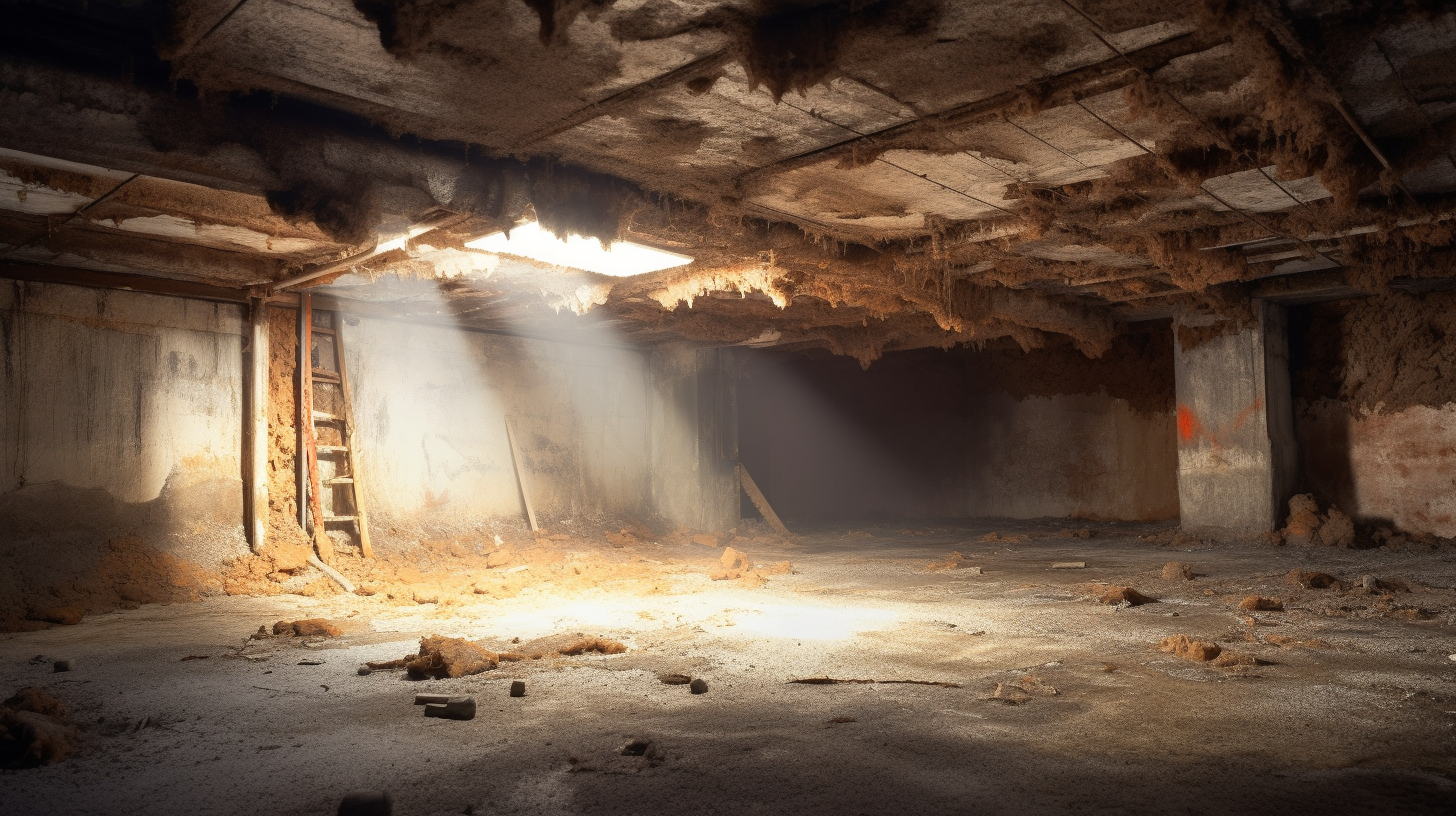Now IS THe Time To...

Crawl Space Services In Knoxville, TN
Stetson Howard: 865-432-6743
CRAWL SPACE ENCAPSULATION, REPAIR, WATERPROOFING & MOLD REMOVAL
No-Obligation, Free Inspections
No-Obligation Free Estimates
We Warranty All of Our Work
100% Satisfaction Guaranteed
Moisture management is an essential aspect of maintaining a healthy, mold-free home, and sump pumps play a pivotal role in this process. Designed to prevent water accumulation in basements and crawl spaces, these devices provide a reliable solution for managing excess moisture that could otherwise lead to mold growth, structural damage, and poor indoor air quality.
Sump pumps work by collecting and removing water that seeps into your home’s lower levels, ensuring that these areas remain dry even during heavy rains or flooding. Whether you’re dealing with a naturally damp basement, a high water table, or poor drainage around your foundation, a sump pump serves as a first line of defense against water-related issues.
In this blog, we’ll explore how sump pumps operate, the different types available, and the key benefits they offer for moisture control. Understanding their functionality and importance is crucial for homeowners looking to protect their properties from the long-term risks associated with excess water and humidity. Let’s dive into why a sump pump might be the solution you need to safeguard your home.
Understanding Sump Pumps
What is a Sump Pump?
A sump pump is a specialized device designed to manage and remove excess water from basements or crawl spaces, protecting your home from moisture-related issues such as flooding, mold growth, and structural damage. At its core, a sump pump system consists of three main components: the sump pit, the pump mechanism, and the discharge pipe. The sump pit is a basin, typically installed at the lowest point of a basement or crawl space, where water collects. The pump mechanism then draws water from the pit and pushes it through the discharge pipe, directing it away from your home to a safe drainage location. By effectively managing water intrusion, a sump pump is a critical tool for maintaining a dry and healthy living space.
How Sump Pumps Work
Sump pumps operate by collecting water in the sump pit, which flows in from surrounding areas such as foundation drains or naturally accumulating groundwater. When the water level in the pit reaches a certain threshold, the pump is triggered automatically, either by a float switch or pressure sensor. The device then activates to remove the water, pushing it out through the discharge pipe to an exterior drainage area or municipal stormwater system. This cycle ensures that your home remains protected from water pooling, even during heavy rainfall or rapid snowmelt. The automated operation of sump pumps makes them a reliable solution for homeowners in areas prone to flooding or with high water tables.
Types of Sump Pumps
There are two primary types of sump pumps, each suited to specific needs and setups. Submersible sump pumps are installed underwater in the sump pit. They are powerful and efficient, making them ideal for larger spaces or homes that experience significant water accumulation. Their submerged design also allows for quieter operation, as the water muffles the sound. On the other hand, pedestal sump pumps are mounted above the sump pit, with the pump mechanism resting on a pedestal and only the intake section submerged. These pumps are easier to access and maintain, but they tend to be louder and may not handle as much water as submersible models. Selecting the right type depends on your home’s specific requirements, space constraints, and water management needs.
How Sump Pumps Help Prevent Mold
Eliminating Standing Water
Standing water in basements or crawl spaces is one of the primary contributors to mold growth. When water accumulates in these areas, it creates a damp and humid environment where mold spores can thrive. Sump pumps play a critical role in eliminating this standing water, ensuring that basements and crawl spaces remain dry. By continuously removing water from sump pits and redirecting it away from the home, sump pumps prevent the prolonged moisture exposure that is necessary for mold to establish and spread.
Reducing Humidity Levels
High humidity levels are another significant factor in mold development. When water sits in a basement or crawl space, it gradually evaporates into the air, increasing indoor humidity and creating favorable conditions for mold. Sump pumps mitigate this issue by removing water before it has a chance to evaporate and raise humidity levels. This reduction in moisture is particularly important in areas already prone to mold growth, such as poorly ventilated basements or crawl spaces. By keeping these spaces dry, sump pumps effectively contribute to a healthier indoor environment.
Preventing Foundation Water Seepage
Water pooling near a home’s foundation poses a dual threat: it can weaken the structural integrity of the foundation and seep into walls and floors, creating hidden mold risks. Moisture trapped in walls and flooring materials provides the perfect conditions for mold colonies to form, often unnoticed until the damage becomes severe. Sump pumps act as a proactive defense against this issue by channeling water away from the foundation, reducing the likelihood of seepage and the subsequent mold risks. This preventative measure not only safeguards the structural integrity of your home but also helps maintain a mold-free environment.
Installing a Sump Pump for Mold Prevention
Choosing the Right Sump Pump
Selecting the appropriate sump pump is a crucial step in ensuring effective moisture management and mold prevention. Several factors should be considered, including the size of the space to be protected, the typical volume of water that needs to be handled, and local weather conditions. For homes with significant water accumulation or larger basements, submersible sump pumps are often the best choice due to their efficiency and quieter operation. For smaller spaces or areas with less frequent water issues, pedestal sump pumps provide a cost-effective and easily maintainable alternative. Evaluating your specific needs and consulting with experts, if necessary, can help you choose the right pump for long-term success.
Professional vs. DIY Installation
Deciding whether to hire a professional or tackle the installation yourself depends on your comfort level and the complexity of the project. Professional installation offers the benefit of proper placement and expert system setup, ensuring that the pump operates efficiently and meets local building codes. For homeowners opting for DIY installation, it’s essential to follow key steps carefully. Start by digging an appropriately sized pit in the lowest point of your basement or crawl space. Install the pump securely in the pit, ensuring it is level, and connect it to the discharge pipes that will carry water away from your home. Proper sealing and alignment are critical to the system's effectiveness.
Optimizing Discharge Placement
The placement of the discharge pipe is just as important as the sump pump itself. Water must be directed far enough from the foundation to prevent it from pooling and seeping back into the home. A minimum distance of 10 feet is generally recommended, though local conditions may require adjustments. Additionally, it’s important to ensure the discharge location does not drain into areas where water could refreeze in winter or cause flooding in neighboring spaces. Thoughtful planning of the discharge system ensures that the sump pump provides maximum protection against moisture and mold risks.
Maintaining Your Sump Pump for Continued Effectiveness
Regular Maintenance Tips
Routine maintenance is essential to ensure your sump pump continues to protect your home from moisture and mold. Start by checking the sump pit regularly for debris or blockages that could impede the pump’s performance. Clear any obstructions to keep the system functioning smoothly. Periodically test the pump by pouring water into the pit to confirm that it activates and discharges water properly. This simple test helps identify potential issues before they escalate. Additionally, clean the discharge pipes to prevent clogs and backups that could compromise the pump's ability to redirect water effectively.
Backup Systems for Power Outages
Power outages can render a sump pump inoperable at critical times, especially during heavy storms. Installing a backup system, such as a battery-powered or water-powered pump, ensures that your home remains protected even when electricity is unavailable. These backup solutions provide peace of mind and continuous defense against water intrusion. Adding an alarm system to your sump pump setup is another smart move. Alarms alert homeowners to system malfunctions or rising water levels, enabling prompt action to prevent damage.
Professional Inspections
While regular DIY maintenance is valuable, scheduling professional inspections annually is the best way to guarantee long-term performance. A professional can thoroughly assess the pump, checking for worn-out components and ensuring all parts are functioning optimally. Addressing small repairs or replacing aging components proactively helps avoid sudden system failures during high-stakes situations. Professional inspections are an investment in the continued reliability of your sump pump system, safeguarding your home from moisture and mold risks.
Combining Sump Pumps with Other Mold Prevention Strategies
Waterproofing the Basement
Waterproofing the basement is a vital step in creating a comprehensive defense against mold. By sealing foundation cracks and installing vapor barriers, you can block moisture from entering your home. These measures not only reduce the risk of water intrusion but also enhance the effectiveness of your sump pump. Sump pumps work in tandem with waterproofing systems to ensure that any water that does penetrate is quickly removed, keeping your basement dry and mold-free. This dual approach creates a robust barrier against moisture-related problems.
Controlling Humidity
Sump pumps are an essential component of moisture management, but they become even more effective when paired with tools for controlling indoor humidity. Dehumidifiers complement sump pumps by removing excess moisture from the air, reducing the overall humidity levels in your basement or crawl space. Proper ventilation also plays a key role in this process, ensuring that damp air is replaced with fresh, dry air. Together, these strategies create an environment where mold struggles to thrive, protecting both your home and your indoor air quality.
Regular Inspections for Mold Risks
Preventing mold requires vigilance, which is why regular inspections of basements and crawl spaces are so important. Look for early signs of mold, such as musty odors, discoloration on walls, or damp surfaces, especially in areas near your sump pump. A well-maintained sump pump can serve as a cornerstone of your moisture control plan, but it works best as part of a comprehensive strategy that includes waterproofing, humidity control, and routine checks for mold risks. Combining these efforts ensures long-term protection for your home and family.
FAQs
Recent Blog Posts
Crawl Space News







